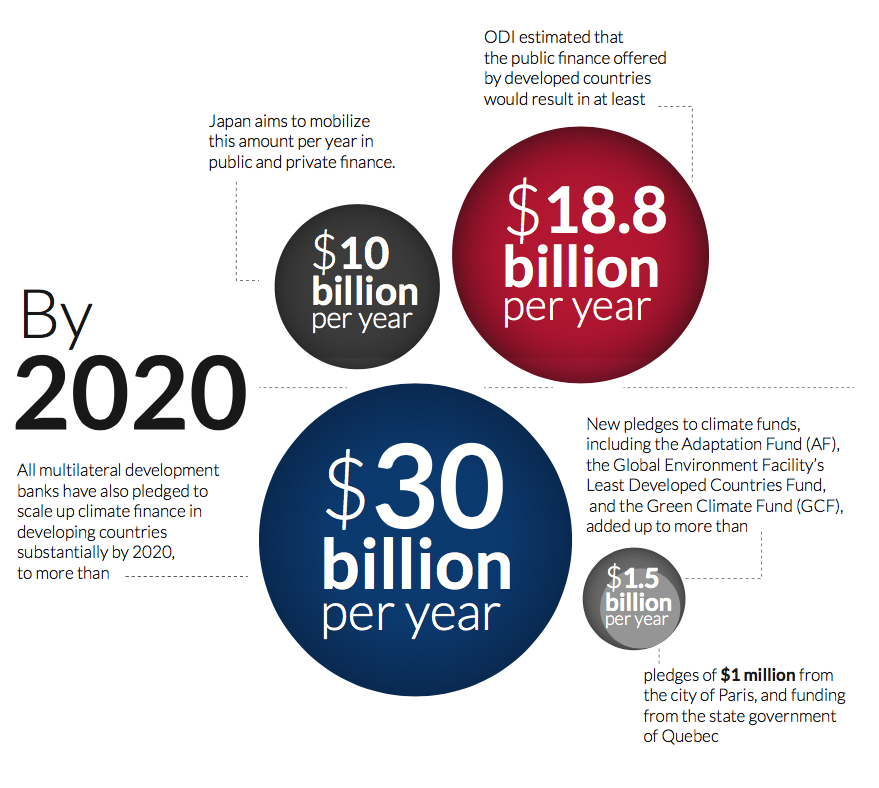Guidelines for Designing Bankable Adaptation Projects

Introduction
Within the context of the United Nations Framework Convention on Climate Change (UNFCCC, 1992) governments have agreed on options that will facilitate the effective, equitable, and efficient delivery of climate finance. This process has reinforced the importance of strong national climate strategies as well as in-country institutional structures. A major theme within these discussions has been “direct access” to climate finance, and over the past decade the volume of nance and number of sources of such finance have grown rapidly.
This paper presents a summary of the Project Appraisal Guidelines developed by ADAPT Asia-Pacific in collaboration with India’s National Bank for Agriculture and Rural Development (NABARD). Building on NABARD’s project shortlisting criteria, the Guidelines help NABARD to harness the local knowledge of India’s civil society organizations to design strong adaptation projects for funding from the Adaptation Fund.
India provides an example of one country where good progress has been made on identifying the best national partners to develop, prepare, and implement bankable development projects and programs that are financed both internationally and domestically. This paper describes how this was achieved through the process in support of the National Bank for Agriculture and Rural Development (NABARD) in its role as the national implementing entity (NIE) for the Adaptation Fund (AF). The paper also suggests that other countries, especially smaller countries such as the Pacific Island Countries, can make similar progress by following the NABARD example.
This is the sixth publication in the USAID Adapt Asia-Pacific Adaptation Finance Knowledge Series. For related resources see the Further Resources section below.
Keys to Success
-
NIEs do not need to design adaptation projects themselves; they can draw from and build on the knowledge of local civil society organizations to design projects for them. Incidentally, these organizations are the best suited to design adaptation interventions relevant to the local conditions.
-
The key to designing fundable adaptation projects is for NIEs to have a thorough understanding of the financier’s requirements, so that they can assist project proponents during the design and appraisal process
The Guidelines
The Guidelines are organized based on a typical project cycle, which has four stages: (i) project identification/ problem diagnosis of the baseline situation; (ii) project design, including appraisal – also called project preparation; (iii) project implementation; and (iv) monitoring and evaluation. Climate analysis must be integrated into each stage. Design and appraisal are part of the project preparation phase, extending up to the approval stage and before implementation starts. This requires a good understanding of the basic project preparation process and the format and content required for submitting project proposals for consideration by the AF Board.
The Guidelines are now in use for training NABARD staff and are available to the local NGOs and other executing entities (EEs) who will be preparing future projects. While the Guidelines have been prepared for use by NABARD and the EEs in the preparation of projects for financing by the AF, they are also applicable for use in preparing projects that may be submitted to other nanciers, e.g. Green Climate Fund, or domestic sources of climate finance.
Funded through USAID’s Regional Development Mission for Asia (USAID/RDMA) and implemented by AECOM, USAID Adapt Asia-Pacific was designed to share information and best practices about climate change adaptation finance modalities and project preparation tools and help governments build capacity to access the existing pool of international climate change adaptation funds.
Go to the USAID Climate Change Adaptation Project Preparation Facility for Asia and the Pacific (USAID Adapt Asia-Pacific) project page
Suggested Citation
USAID Adapt Asia-Pacific (2016) Guidelines for Designing Bankable Adaptation Projects. USAID Regional Development Mission for Asia: Bangkok, Thailand.
The Adaptation Finance Knowledge Series
USAID Adapt Asia-Pacific has been helping countries develop bankable adaptation projects and improve their access to funding. These experiences, published in this series, are based on our work with governments, multilateral and regional organizations, and other experts.
- Guidelines for Designing Bankable Adaptation Projects (2016)
- 6 Things to Know about Urban Adaptation (2016)
- Analyzing the Economic Costs and Benefits of CCA Options (2016)
- Shortlisting Climate Change Adaptation Projects (2015)
- Quick Guide to Climate Change Adaptation Funds (2015)
- Defining Country Systems for CCA Finance (2015)
- The Exchange Series on Climate Financing (2013-2015)
- USAID Adapt Asia-Pacific Annual Meeting Proceedings (2012-2015)
(0) Comments
There is no content